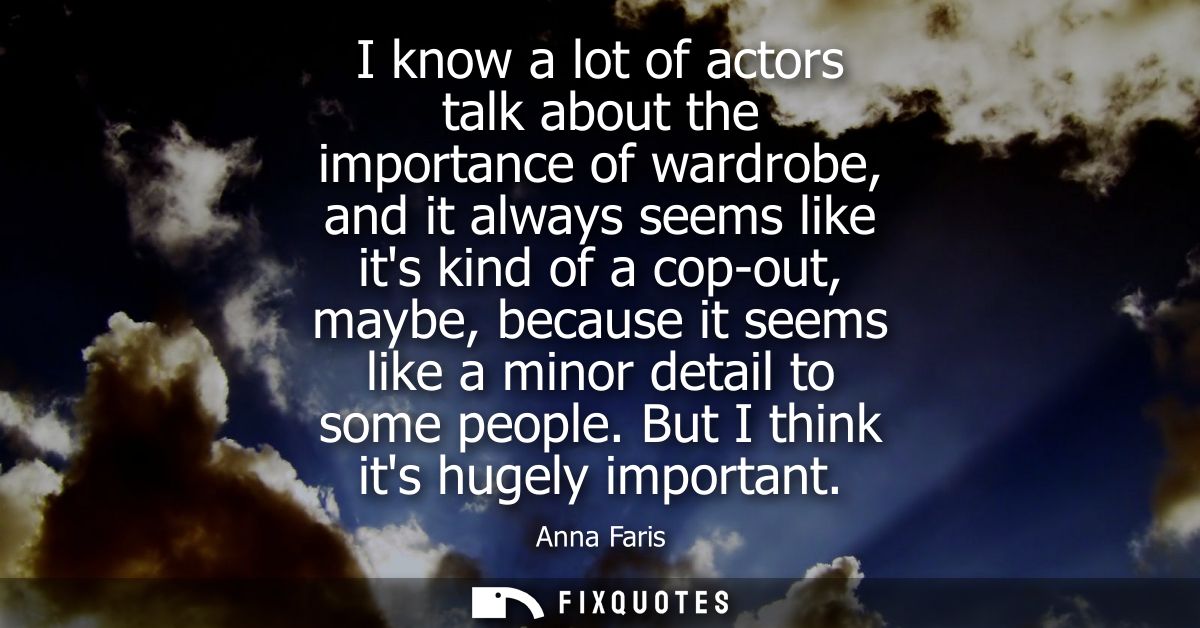"I know a lot of actors talk about the importance of wardrobe, and it always seems like it's kind of a cop-out, maybe, because it seems like a minor detail to some people. But I think it's hugely important"
About this Quote
Anna Faris reflects on the vital role wardrobe plays in the craft of acting, countering the common notion that clothing choices are a superficial or minor detail in the process of building a character. While some might dismiss the focus on costuming as an easy or even lazy explanation for an actor's preparation, Faris insists that wardrobe is in fact a substantial and meaningful part of performance.
Wardrobe is not simply about fashion or aesthetics; it's an extension of a character's personality, background, and emotional state. The way a character dresses can reveal class, profession, confidence, insecurities, or even secrets. For an actor, inhabiting clothes selected for a specific role can trigger subtle but powerful shifts in posture, voice, and physical movement. Slipping into a uniform, vintage dress, or rugged boots can dissolve the boundaries between the actor and the character, facilitating a transformation that feels natural and immersive. Faris suggests that these tangible details help manifest the interior world of the role and foster authenticity.
Audiences may not consciously analyze each costume choice, but they pick up on the story told through clothing. A believably dressed character enriches the viewing experience and adds layers of credibility to the performance. Faris’s perspective acknowledges the collaborative art of filmmaking: costumers, directors, and actors all work together to realize a character’s look and feel, contributing significantly to storytelling. Underestimating the impact of wardrobe ignores how physical sensations and visual cues anchor an actor’s identity on set.
Therefore, Faris contends that wardrobe is more than an accessory, it’s a powerful tool intertwined with psychological preparation and character development. For actors, attention to these “minor details” is essential, serving as a bridge between imagination and reality, ultimately helping both the performer and the audience believe in the world being created.
More details
About the Author

